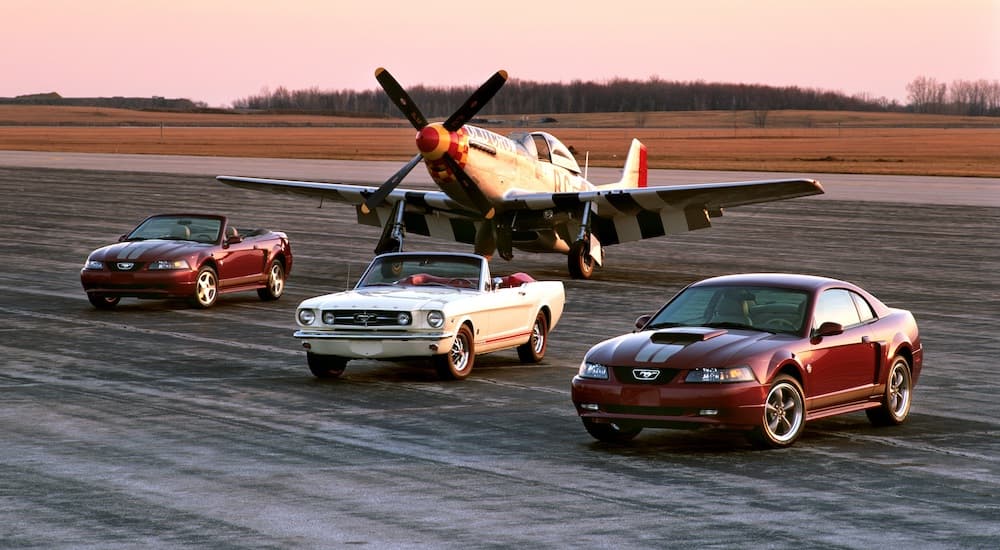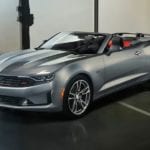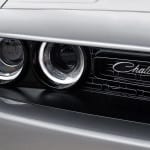If you’re searching for a new Ford for sale, you may want to take a step back and consider the used car lot first. Although new Fords have the latest technology and features, there’s nothing that quite stands up to the coolness-factor of classic Mustang. Mustangs have become an integral part of our pop culture, evidenced by their appearance in several big pictures, songs, and TV series throughout the decades. Since the day it was introduced, the mustang earned itself a glamorous reputation in the car scene that continues to withstand the test of time today.
What’s In A Stage Name
According to Ford, the name “Mustang” was originally suggested by John Najjar, an executive Ford stylist who was inspired by the P-51 Mustang Fighter Plane from WWII. Another possible origin of the name was from the book The Mustangs by J. Frank Dobie. Robert J. Eggert, a market researcher for Ford at the time, received the book for his birthday. Eggert bred Quarter Horses (which are known for being fast sprinters). It only made sense to draw a parallel to the speedy car he was working on.
To make the final decision on the name “Mustang,” focus groups were given an assortment of possible names to choose from, including T-bird II (the suggestion of Henry Ford II), Cougar (also suggested by Eggert) or Torino (which made it as far as an early ad campaign for the car but became it’s own model a few years later). However, Mustang won by a landslide for members of the focus groups. Unfortunately, in Germany, the name was already taken. Initially, it was being used for German trucks by a company called Krupp. After 1964, another company, Kriedler, grabbed the name for its mopeds. Up until 1978, Mustangs in Germany went by the name “T-5.” Henry Ford II chose to do this rather than purchasing the name from these other companies, which would have cost him about $10,000 at the time.
To showcase this early “race prototype,” Formula One race driver, Dan Gurney, demonstrated it’s impressive speed at the 1962 US Grand Prix at Watkins Glen. Ford marketed the car as a “high-performance personal automobile (that) could fit the mass sports car market.” As the Thunderbird demonstrated in the 1950s, two-seater sports cars had a limited market of interested buyers. The four-seater Mustang, dubbed the Mustang II, provided a lasting mass appeal. This earned it an early spot in the limelight, followed by a steady rise in popularity and fame.
Mustang’s Grand New York Fair Debut
The famous year of the mustang is 1965. Although this is when Ford widely released it’s prized vehicle, production began in March of 1964 in Dearborn, Michigan. This early version of the Mustang was shown to the public a month later in April at the New York World’s Fair.
Back then, you would have paid $2 for an adult ticket or $1 for children to peruse the 646 acres of international innovations, among an impressive array of rides, pools, and fountains. The Mustang was in good company with showcases from leading auto manufacturers, consumer goods, and technology from around the globe. With its theme “Peace Through Understanding,” the 1964 New York World Fair even included some early computer equipment!
While any driver would be happy to get a new Ford for sale, many car enthusiasts today are nostalgic for the older Mustangs. In fact, the 1965 Mustang was the first automobile to win the Tiffany Gold Medal, recognizing it’s American design excellence. Its classic style has penetrated our collective cultural psyche as a mainstay in several motion pictures throughout the generations.
Mustang’s Role in Pop Culture
The Classic James Bond Movie, Goldfinger (1964), is often remembered as Mustang’s first cinematic appearance. Although Goldfinger provided Mustang with wide commercial appeal, Nicole Cruchot’s character, Genevieve Grad, in The Troops of St. Tropez (1964), was actually the first to cruise in the convertible. Later in 1968, Steve McQueen starred in the action movie, Bullitt, racing a real 1968 Mustang GT fastback against a Dodge Charger. The Mustang appeared in the James Bond series for a second time in Diamonds are Forever (1971).
Perfectly fitting for it’s fast reputation, the movie, Gone in 60 Seconds (1974), featured a Mustang announced as the star of the show during the opening credits. Nicknamed “Eleanor” this 1971 Ford Mustang Sportsroof was the only Mustang to actually receive movie title credits. Its V8 engine is powered by a 351 Ford Motorsport Crate that you can find for a pretty penny at car collector’s auctions.
Mustang stole the show again for the Gone in 60 Seconds movie remake in 2000. This version of Eleanor (a 1967 Ford Mustang) sold for one million dollars at the Mecum Indianapolis Auction. It was the “hero” car of the film, though several mock-ups were made (and some destroyed) during filming. It’s clear that even 30 years later, the style of the car was still relevant and appealing to thrill-seeking movie-goers.
The smaller screen has also seen it’s fair share of mustangs. Through the late ’60s, the TV series FBI showed the evolution of the Mustang into a muscle car as Efrem Zimbalist Jr. drove them on the show, which was smartly sponsored by Ford. In 1997-1998 Team Knight Rider featured a Mustang convertible named “Domino.” The Mustang reappeared in the 2008 movie as well.
For the true fans out there, the documentary, A Faster Horse, details the creation of the 2015 Mustang, directed by David Gelb. The documentary features interviews and footage of Mustang designers, collectors and Henry Ford II himself. It offers inside access to historical Ford facilities and touches on the evolution of the Mustang from commercial sports car to pop icon. It connects the past and present stories of Mustang innovation, weaving together decades of American history.
Beyond movies and television, Mustang’s fame is also evident in music and video games. Wilson Pickett recorded the song “Mustang Sally” in 1966. With its booming chorus, “Ride, Sally, Ride!,” you’d be hard-pressed to find an American who isn’t familiar with the tune. Much later in 2005, the video game, Ford Mustang: The Legend Lives, lets players race only mustangs. Whatever you’re preferred medium or decade, it’s clear that the Ford Mustang is a vibrant player in the classic and modern entertainment industry.
How The Mustang Is Holding Up In Today’s Day and Age
Currently in its 6th generation, The Ford Mustang is the only original pony car to be produced non-stop over 50 years. Despite the undeniable charm of the classic 1965 model, the latest version has great horsepower, paired with safety features and of course, an impeccably cool style. Today’s shiny new Mustangs can be found in several styles: Fastback, Coupe, Bullitt, Shelby, and Convertible. The EcoBoost features pair Mustang’s traditional speed and strength with better gas mileage. When shopping around for a new Ford for sale, look no further than the timeless, but modern, Mustang.






